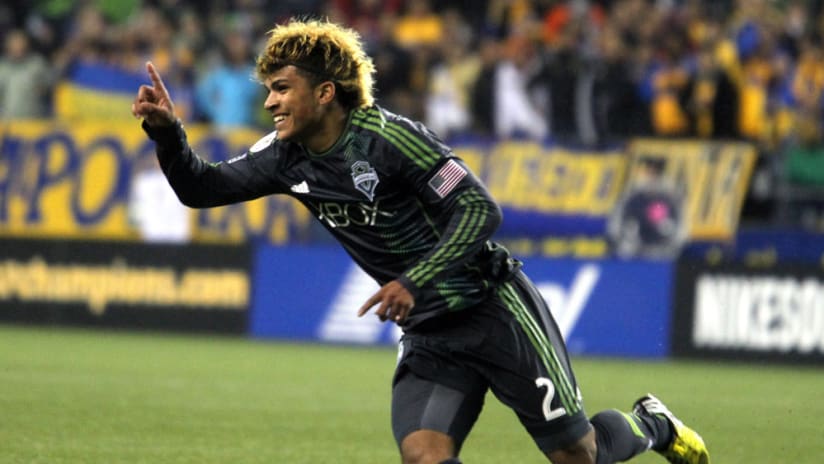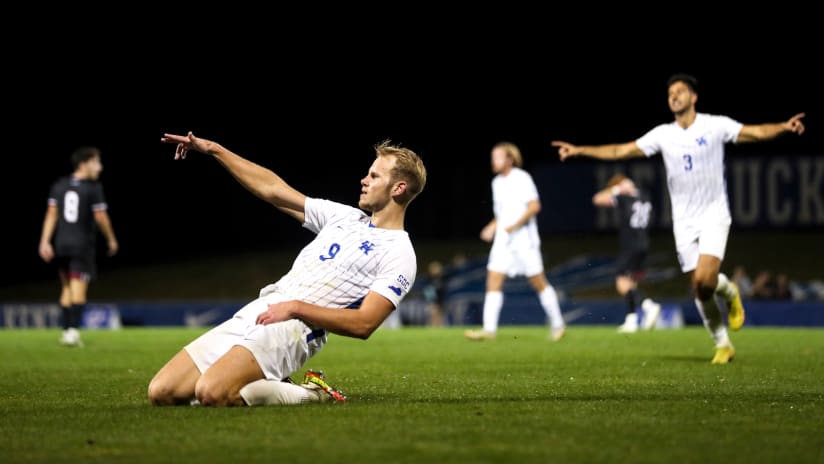In the first installment of his blog, Sounders broadcaster Ross Fletcher dives into the Homegrown Player discussion.
It is one of the most eye-catching statistics from the first eight games of this season. A statistic normally reserved for midfield powerhouse Ozzie Alonso or one of the other experienced members of the squad. At 639 minutes, 19-year-old DeAndre Yedlin has been on the field for longer than any other Seattle Sounder, and he became the youngest player to score a goal and record an assist for Sounders FC – striking stuff for the local kid from O’Dea High School, the rookie who is still getting used to his new surroundings.
Yedlin is the Sounders’ first Homegrown Player, signed in the offseason after coming through the clubs’ Academy system, under-23 side and two college years at Akron. Since Major League Soccer announced the Homegrown initiative five years ago, clubs have been allowed to directly sign players from their development academies to their first team roster. Previously, players had to go through an MLS allocation process, most likely the annual SuperDraft. In effect, the rule has given teams the incentive to nurture their own talent. Yedlin was the first rave green fruit to be picked off the tree and a great example of how an increase in investing in local talent can bring rewards.
Developing top US talent will be a long, expensive but necessary process if MLS is to hit its target of becoming one of the top leagues in the world by 2022. And it is something the league is serious about. While the early days of the league were spent putting down roots for the professional game to thrive, development was on the back burner. Now in its 18th season, a maturing league has made strides in identifying the rich potential from within its shores. The youth development framework was significantly overhauled by US Soccer in 2007 and we are now at the stage where MLS teams have their own academies as part of an 80-club structure (of which you can see a breakdown here).
Critically, coaching the coaches is also high on the agenda. In a deal brokered this year by MLS, several MLS Academy directors, including the Sounders’ Darren Sawatzky, are getting the chance to spend time at the world renowned French Football Federation centre of excellence at Clairefontaine, which helped turn the France team into 1998 World Cup winners (just ask Thierry Henry or read his about his development here). The simple logic behind it all? Better quality coaches, exposed to the best techniques in the world, will produce better quality players.
Seventy young hopefuls have been signed by clubs through the homegrown rule since it came in to force. Naturally, it has been a case of hit and miss. Fourteen of those who made the professional ranks are no longer active. Some clubs have gone big in their investment in youth, with FC Dallas bringing through six players to their first team squad and Columbus Crew five. The Sounders’ opponents this weekend, New England Revolution, have recently blooded their first two homegrown talents Diego Fagundez and Scott Caldwell. Los Angeles are reaping the rewards of a talent-rich California climate. In Jack McBean and Jose Villareal, the Galaxy have two promising young strikers who are already delivering – Villareal with a stunning late equalizer at Toronto recently and McBean with some crucial goals in the 2012/13 CONCACAF Champions League Group Stage.
So, what are the benefits of developing your own young players rather than relying on the annual college draft? In brief, clubs can nurture their players the way they want to – to instill their values and their style of play from a much earlier age. They can tap in to the hometown affinity – you can see how much pride Yedlin has in playing for the team he watched in his formative years. The players also become an asset. Instead of a club giving something up to acquire them in a draft or a trade, the reverse is true.
Much was recently made of the USA’s highly creditable nil-nil World Cup Qualifying result in Mexico and the fact that all 11 starting players had a grounding in Major League Soccer. As the youth development structure in this country continues to improve, we could well get to the stage where that is no longer even a talking point.





